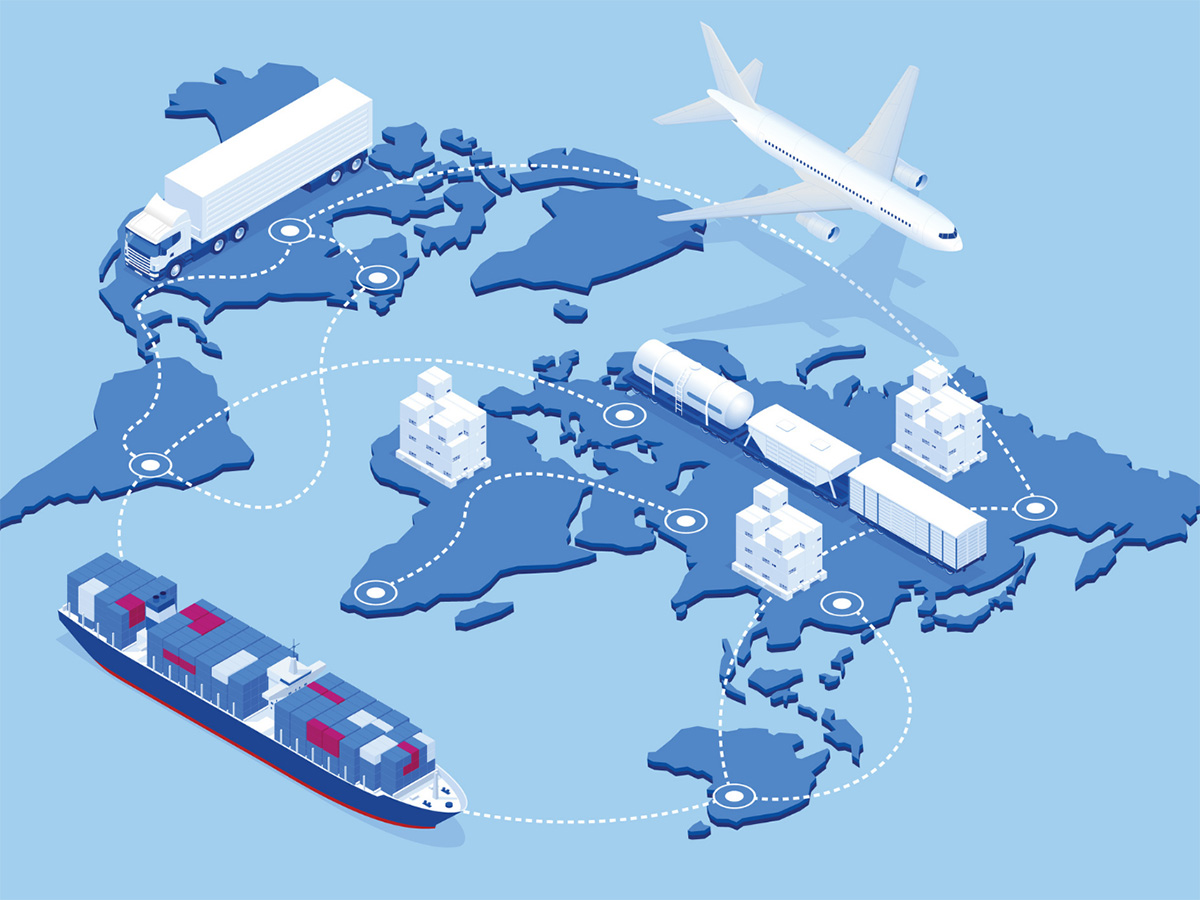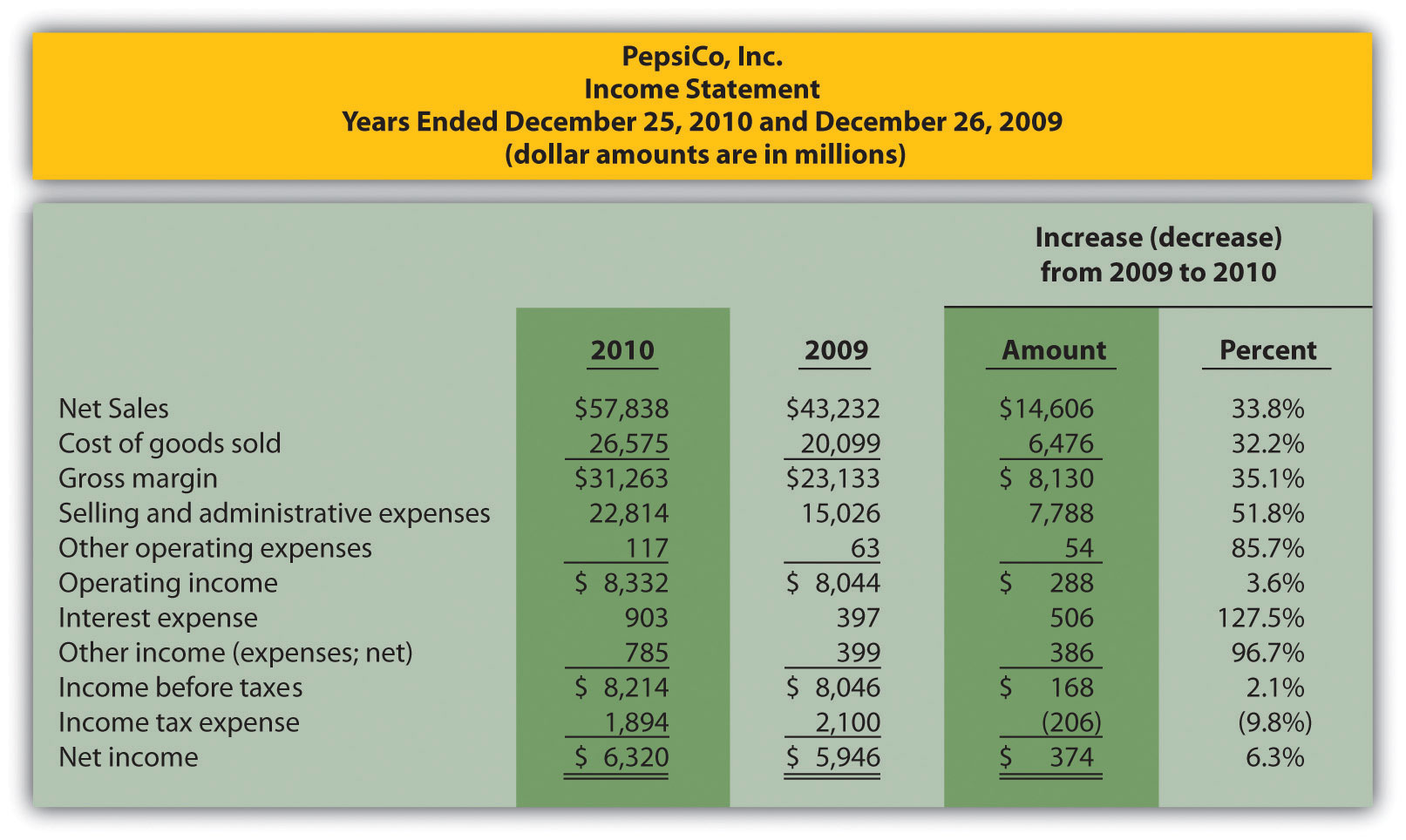Home>Finance>How Does The Concept Of A Supply Chain Differ From The Idea Of A Value Chain?


Finance
How Does The Concept Of A Supply Chain Differ From The Idea Of A Value Chain?
Modified: February 21, 2024
Discover the key distinctions between a supply chain and a value chain in finance. Uncover how these concepts shape businesses and drive strategic decision-making.
(Many of the links in this article redirect to a specific reviewed product. Your purchase of these products through affiliate links helps to generate commission for LiveWell, at no extra cost. Learn more)
Table of Contents
Introduction
In today’s globalized and interconnected world, businesses rely heavily on efficient and effective operations to gain a competitive edge. Two concepts that play a vital role in achieving operational excellence are the supply chain and the value chain. While both terms are often used interchangeably, they have distinct meanings and functions within an organization.
The supply chain refers to the entire network of companies, individuals, activities, and resources involved in the production, distribution, and delivery of a product or service to customers. It encompasses every step from sourcing raw materials to delivering the final product to the end consumer. On the other hand, the value chain refers to the sequence of activities within a company that add value to a product or service, ultimately leading to customer satisfaction and profitability.
Understanding the difference between the supply chain and the value chain is crucial for businesses to optimize operations, reduce costs, and deliver superior value to customers. By delving into the key components and functions of each concept, we can gain a comprehensive understanding of their roles within an organization.
In this article, we will explore the definitions of supply chain and value chain, examine their key components, and highlight the differences between the two concepts. We will also discuss the significance of these chains in driving business success and provide examples of supply chain and value chain implementation in various industries.
By the end of this article, you will have a clear understanding of how the concept of a supply chain differs from the idea of a value chain and how they contribute to a company’s overall operational efficiency and competitive advantage.
Definitions of Supply Chain and Value Chain
The supply chain is a term used to describe the network of organizations, activities, resources, and technologies involved in the production and delivery of goods and services from the source to the end customer. It encompasses all the processes, from procurement and manufacturing to distribution and logistics. The goal of a supply chain is to ensure the smooth flow of materials, information, and financial transactions across all stages, ultimately meeting customer demands efficiently.
On the other hand, the value chain is a concept introduced by Michael Porter that describes a series of activities a company undertakes to create and deliver value to its customers. It includes both primary activities, such as inbound logistics, operations, marketing and sales, and customer service, as well as support activities, such as procurement, technology development, and human resources. The value chain aims to identify and optimize each step in the process to enhance the overall value delivered to customers and maximize profitability.
While the supply chain focuses on the entire network of activities involved in delivering a product or service, the value chain is specific to a single company and focuses on the activities within its boundaries. The supply chain is more externally focused, encompassing multiple organizations and stakeholders, while the value chain is internally focused, examining how a company can create value through its own activities.
It is important to note that the two concepts are closely related and often overlap. A company’s value chain is part of a larger supply chain, as it involves working with suppliers and distributors to ensure the seamless flow of materials and information. Effectively managing both the supply chain and value chain is crucial for achieving operational efficiency, reducing costs, and delivering exceptional value to customers.
Key Components of a Supply Chain
A supply chain consists of several interconnected components that work together to ensure the efficient flow of products or services from the source to the end consumer. Understanding these key components is essential for managing and optimizing the supply chain. Here are the main components of a supply chain:
- Suppliers: Suppliers are the entities or individuals who provide the necessary raw materials, components, or services required for the production of goods or services. They play a crucial role in ensuring the quality and timeliness of inputs for the supply chain.
- Manufacturing: The manufacturing component involves transforming raw materials into finished products through various processes, including assembly, production, packaging, and quality control. This step focuses on maximizing operational efficiency and minimizing costs.
- Transportation: Transportation refers to the movement of goods from one location to another, whether it be from the supplier to the manufacturer, between different facilities within the supply chain, or from the manufacturer to the end consumer. Efficient transportation ensures timely delivery and minimizes disruptions.
- Warehousing and Inventory Management: Warehousing plays a vital role in storing and managing inventory throughout the supply chain. It involves activities such as inventory tracking, stock replenishment, order fulfillment, and distribution. Effective inventory management minimizes costs and ensures product availability.
- Distribution: Distribution involves the allocation and delivery of finished products to customers or retailers. It includes various channels such as wholesalers, retailers, e-commerce platforms, and direct sales. Optimizing distribution networks ensures timely and accurate order fulfillment and customer satisfaction.
- Information Technology: Information technology plays a crucial role in managing and coordinating the different aspects of the supply chain. It includes systems for order processing, inventory management, demand forecasting, supply chain analytics, and communication among all stakeholders. Effective utilization of technology enables real-time visibility and enhances decision-making.
Each of these components contributes to the overall efficiency and effectiveness of the supply chain. By effectively managing and optimizing these components, businesses can minimize costs, reduce lead times, improve customer satisfaction, and gain a competitive advantage.
Key Components of a Value Chain
The value chain consists of a series of activities that a company engages in to create, deliver, and capture value for its customers. These activities can be categorized into primary activities and support activities. Understanding the key components of the value chain is crucial for identifying areas of value creation and ensuring a competitive advantage. Here are the main components of a value chain:
- Inbound Logistics: Inbound logistics involves receiving, storing, and distributing the raw materials and inputs required for the production process. This includes activities such as receiving shipments, inventory management, and quality control. Effective inbound logistics ensures that the right inputs are available at the right time and in the right quantity.
- Operations: Operations encompass the core processes involved in transforming the inputs into finished products or services. This includes manufacturing, assembly, packaging, and quality control. The goal of operations is to ensure efficiency, consistency, and quality in the production process.
- Outbound Logistics: Outbound logistics involves the activities related to storing, transporting, and delivering the finished products to the end customers or distribution channels. This includes order fulfillment, inventory management, and distribution network optimization. Effective outbound logistics ensures timely and accurate delivery to meet customer demands.
- Marketing and Sales: Marketing and sales activities involve promoting, advertising, and selling the products or services to customers. This includes market research, product positioning, pricing, advertising campaigns, and relationship management. Effective marketing and sales strategies aim to attract and retain customers, increase market share, and maximize revenue.
- Customer Service: Customer service activities focus on providing assistance, support, and after-sales services to customers. This includes addressing customer inquiries, handling complaints, providing technical support, and ensuring customer satisfaction. Excellent customer service builds customer loyalty and enhances brand reputation.
- Procurement: Procurement involves sourcing and acquiring the necessary resources, materials, and services required for the value chain activities. This includes supplier selection, negotiation, contract management, and supplier relationship management. Strategic procurement ensures the availability of high-quality inputs at optimal costs.
- Technology Development: Technology development activities involve research and development, innovation, and technological advancements to enhance the value proposition. This includes product design, process improvement, and technology adoption. Incorporating technology effectively can lead to product differentiation and operational efficiency.
- Human Resources: Human resources activities focus on managing the workforce and ensuring a skilled and capable workforce to execute the value chain activities. This includes recruitment, training, performance management, and employee engagement. Having the right people with the right skills enhances productivity and overall performance.
By optimizing each component of the value chain, companies can increase their competitive advantage, improve customer satisfaction, and maximize profitability. The value chain provides a comprehensive framework for businesses to analyze and enhance their internal operations, ultimately delivering superior value to customers.
Differences between Supply Chain and Value Chain
While the terms “supply chain” and “value chain” are often used interchangeably, there are significant differences between the two concepts. Understanding these differences is crucial for businesses to effectively manage their operations and create value for their customers. Here are the main distinctions between the supply chain and the value chain:
- Scope: The supply chain encompasses the entire network of organizations, activities, and resources involved in the production, distribution, and delivery of goods and services. It focuses on the external coordination of various stakeholders to ensure smooth operations. On the other hand, the value chain is specific to a single company and focuses on the internal processes and activities that create and deliver value to customers.
- Focus: The supply chain is primarily concerned with the efficient flow of products, materials, and information across multiple organizations and stages. It aims to optimize processes and minimize costs throughout the supply network. In contrast, the value chain focuses on the specific activities within a company that contribute to the creation of value for customers. It examines how each step in the process adds value and seeks to enhance those activities to achieve a competitive advantage.
- Orientation: The supply chain is more externally focused, dealing with suppliers, distributors, logistics providers, and other external stakeholders. It involves managing relationships and coordinating activities across multiple organizations to ensure the flow of goods and services. The value chain, on the other hand, is internally focused and examines the activities within a company’s boundaries that directly contribute to value creation. It involves identifying and optimizing these activities to enhance customer satisfaction and profitability.
- Integration: The supply chain requires integration and collaboration among different organizations to ensure the efficient flow of materials and information. It involves maintaining strong relationships, sharing data, and coordinating activities across the entire supply network. In contrast, the value chain integrates and aligns the various internal activities within a company to create a seamless and value-driven process. It focuses on optimizing the internal flow of activities and resources.
- Performance Measurement: The supply chain is often measured in terms of key performance indicators (KPIs) such as on-time delivery, inventory turnover, and cost per unit. These metrics assess the efficiency and effectiveness of the overall supply network. In contrast, the value chain is measured in terms of value delivered to customers, customer satisfaction, and profitability. It focuses on the value created at each step of the internal process to drive business success.
While the supply chain and the value chain are distinct concepts, they are closely interconnected. Effectively managing the supply chain is essential for ensuring the smooth flow of materials and information within the value chain. Similarly, optimizing the value chain contributes to improved performance and competitiveness throughout the supply network. By understanding the differences and synergies between these concepts, businesses can enhance their operational efficiency, customer satisfaction, and overall business performance.
Importance of Supply Chain and Value Chain
The supply chain and value chain are crucial components of a company’s operations and play a vital role in its success. Here are the key reasons why these concepts are important:
- Operational Efficiency: A well-managed supply chain ensures the smooth flow of materials, information, and processes, leading to improved operational efficiency. By optimizing procurement, production, inventory management, and distribution, businesses can minimize costs, reduce waste, and enhance productivity. A streamlined and efficient supply chain enables companies to deliver products and services to customers on time and at the right cost.
- Customer Satisfaction: Both the supply chain and value chain have a significant impact on customer satisfaction. A well-designed supply chain ensures that products are available when and where customers need them, leading to high customer satisfaction levels. The value chain focuses on activities that directly contribute to creating value for customers, such as product design, quality control, and customer service. By delivering superior value, companies can build strong relationships with customers and differentiate themselves in the marketplace.
- Competitive Advantage: Effectively managing the supply chain and value chain provides a competitive advantage. A well-optimized supply chain allows companies to respond quickly to market changes, reduce lead times, and adapt to customer demands. The value chain helps companies identify areas of differentiation and focus on core competencies, allowing them to offer unique products, tailored services, or superior quality. By continuously improving and innovating in supply chain and value chain activities, companies can gain a competitive edge in the market.
- Cost Reduction: Efficient supply chain management and value chain optimization contribute to cost savings. By streamlining processes, reducing waste, and improving inventory management, companies can lower their operating costs. Effective procurement practices in the supply chain can result in negotiated savings and favorable supplier relations. The value chain, by identifying cost drivers and eliminating non-value-added activities, helps the company operate efficiently and achieve cost advantages.
- Business Resilience and Risk Management: Having a well-structured and resilient supply chain is crucial for mitigating risks and disruptions. By diversifying suppliers, building contingency plans, and implementing robust logistics and inventory management practices, companies can better respond to unforeseen events such as natural disasters, supply shortages, or geopolitical issues. Similarly, an optimized value chain reduces dependency on external factors by focusing on internal capabilities, thus safeguarding the business against uncertainties.
Overall, the supply chain and value chain are essential for enhancing operational efficiency, improving customer satisfaction, gaining a competitive advantage, reducing costs, and ensuring business resilience. By investing in these areas and continuously evaluating and improving the processes, companies can achieve long-term success in today’s dynamic and competitive business environment.
Examples of Supply Chain and Value Chain in Various Industries
The concepts of supply chain and value chain are applicable to a wide range of industries. Here are some examples of how these concepts are implemented in different sectors:
- Retail Industry: In the retail industry, a well-managed supply chain ensures that products are sourced from suppliers, stored in distribution centers, and delivered to retail stores or directly to customers. Efficient inventory management and logistics play a crucial role in maintaining product availability and minimizing stockouts. The value chain in retail focuses on activities such as product sourcing, store layout, visual merchandising, and customer service, all of which contribute to enhancing the customer experience and creating value.
- Automotive Industry: In the automotive industry, the supply chain encompasses various components such as engines, electronics, tires, and other parts sourced from suppliers worldwide. Efficient supply chain management ensures that these components are delivered to assembly plants on time and in the right quantities. The value chain in the automotive industry involves design and engineering, manufacturing, marketing, and aftersales service. Each step in the value chain adds value to the final product, ensuring customer satisfaction and loyalty.
- Technology Industry: In the technology industry, the supply chain involves the sourcing of raw materials and components for electronic devices such as smartphones and laptops. Efficient supply chain management is crucial for reducing lead times and ensuring the availability of components for production. The value chain in the technology industry focuses on research and development, product design, manufacturing, marketing, and customer support. Value is created through innovation, quality, and customer-centric approaches.
- Food and Beverage Industry: In the food and beverage industry, the supply chain includes procuring raw materials from farms and suppliers, processing them into finished products, and distributing them to retail stores and restaurants. Effective supply chain management ensures food safety, freshness, and timely distribution. The value chain in this industry involves aspects such as product development, branding, packaging, and quality control. The value is created through taste, convenience, and meeting specific consumer preferences.
- Healthcare Industry: In the healthcare industry, the supply chain includes the procurement and distribution of medical supplies, equipment, and pharmaceuticals to hospitals, clinics, and pharmacies. It is crucial for ensuring the availability of critical supplies, managing expiration dates, and minimizing waste. The value chain in healthcare focuses on patient care, hospital operations, research and development, and pharmaceutical manufacturing. The value is created through improved patient outcomes, efficient healthcare delivery, and innovative medical technologies.
These examples highlight how the concepts of supply chain and value chain are applied in different industries. By effectively managing these chains, businesses can streamline operations, improve customer satisfaction, create value, and gain a competitive advantage in their respective markets.
Conclusion
The concepts of supply chain and value chain are integral to the success of businesses in today’s globalized and competitive marketplace. While the supply chain focuses on the external coordination and integration of activities, the value chain is specific to a single company and emphasizes the internal processes that create value for customers.
The supply chain encompasses all the network of organizations, resources, and activities involved in the production, distribution, and delivery of goods and services. On the other hand, the value chain consists of the activities within a company that directly contribute to value creation, such as product design, manufacturing, marketing, and customer service.
Both the supply chain and the value chain play crucial roles in driving operational efficiency, customer satisfaction, and overall business performance. By effectively managing the supply chain, businesses can ensure the smooth flow of materials, minimize costs, and optimize logistics and procurement processes. By optimizing the value chain, companies can enhance the value delivered to customers, differentiate themselves in the market, and gain a competitive advantage.
The supply chain and value chain are interdependent and require effective coordination and integration. A well-managed supply chain contributes to the efficiency and effectiveness of the value chain, ensuring that products and services are delivered to customers in a timely and cost-effective manner. Simultaneously, an optimized value chain enhances the overall value proposition by focusing on customer-centric activities and maximizing operational efficiencies.
In various industries such as retail, automotive, technology, food and beverage, and healthcare, the concepts of supply chain and value chain are applied to streamline operations, minimize costs, improve customer satisfaction, and drive innovation. By understanding these concepts and their implementation in specific industries, businesses can tailor their strategies to meet industry-specific challenges and gain a competitive edge.
In conclusion, the supply chain and value chain concepts are essential frameworks for businesses to optimize their operations, exceed customer expectations, and achieve sustained business success. By continuously evaluating and improving these chains, companies can adapt to changing market dynamics, deliver superior value, and thrive in today’s dynamic business landscape.














